The International Seismological Centre (ISC) is a non-governmental, nonprofit organization charged with the final collection, analysis and publication of standard earthquake information from all over the world.
History
List of Directors
Publisher of the "Shide Circular Reports on Earthquakes"
1900–1912 J. Milne
Publisher of "Reports on Large Earthquakes"
1912–1917 H.H. Turner
Director of the International Seismological Summary
1918–1931 H.H. Turner
1931–1939 H. Plaskett
1939–1952 Sir Harold Jeffreys
1952–1960 R. Stoneley
1960–1963 P.L. Willmore
Director of International Seismological Centre
1964–1970 P.L. Willmore
1970–1977 E.P. Arnold
1977–1997 A.A. Hughes
1998–2003 R.J. Willeman
2004–2007 A. Shapira
2008–present D.A. Storchak
Purpose
The main scientific goal of the Centre is the definitive compilation of earthquake information and the readings on which they are based. Collection of reports of earthquake effects is also an important part of its operation and the Centre recomputes the location and occurrence time of earthquakes worldwide, making use of all available information.
Since 1957 the manipulation of the large volume of data has been mainly carried out by computer. Up until then ISS locations were determined manually with the help of a large globe. The ISC now uses a network of workstations accessing a relational database of nearly 50 Gbytes of online data.
The analysis of the earthquake data is undertaken in monthly batches and begins after at least 18 months to allow the information used to be as complete as possible. Although much of the work would be impossible without the Centre's large suite of computer programs, the final editing of events large enough to be detected by several independently operated networks is always carried out by seismologists who scrutinize the output for unlikely events and chance misassociation of readings.
During analysis the computer program first groups origin estimates from different agencies and then associates the individual station readings with the most likely event. In a typical month more than 200,000 station readings are analysed leading to an average of 10,000 events per month being identified, of which some 4,000 require manual review. Misassociations and other discrepancies are rectified and the remaining unassociated readings are searched for new events and previously unreported earthquakes are added to the database. The total number of events listed each month is several times greater than those obtained by any other worldwide location service and results from ISC's goal to provide a fully comprehensive list.
ISC-GEM earthquake catalogue
This global instrumental earthquake catalogue, covering events for the period 1900–2009, was released in 2013 by the International Seismological Centre. The catalogue was prepared at the request of the GEM Foundation. Epicentral locations and hypocentral depths were recalculated from original travel time data using a consistent velocity model. Magnitudes are expressed as moment magnitude scale (Mw), taken either from reliable published values of seismic moment or from recalculated values of surface wave or body wave magnitude, converted to Mw using empirical relationships.[1]
References
"Overview of the ISC-GEM Catalogue". Retrieved 30 November 2014.
Sources
Di Giacomo, D.; Storchak, D. A.; Safronova, N.; Ozgo, P.; Harris, J.; Verney, R.; Bondár, I. (2014), "A New ISC Service: The Bibliography of Seismic Events", Seismological Research Letters (Seismological Society of America) 85 (2): 354–360, doi:10.1785/0220130143
McGregor, D. M.; Hughes, A. A.; Adams, R. D. (1988), "Recent activities at the International Seismological Centre", History of Seismograms & Earthquakes of the World (PDF), Academic Press, pp. 107–111, ISBN 978-0124408708
Storchak, D. A.; Di Giacomo, D.; Bondár, I.; Engdahl, E. R.; Harris, J.; Lee, W. H. K.; Villaseñor, A.; Bormann, P. (2013), "Public Release of the ISC-GEM Global Instrumental Earthquake Catalogue (1900-2009)", Seismological Research Letters (Seismological Society of America) 84 (5): 810–815, doi:10.1785/0220130034 (WIKI)
***
Catalogue Overview, Version 3.0, 28 January 2016
To process earthquakes during 1935-1959 we digitized body wave arrival times as well as amplitudes and periods for various phases using a multitude of sources to allow relocation and magnitude re-computation (for this time period only MS) using the same approaches described in Di Giacomo et al. (2015a). Compared to the first catalogue’s release, for this version we were able to add amplitudes from printed station bulletins that were not available in the original ISC collection. The additional station bulletins were kindly provided from the personal collection of Prof. N. Ambraseys, British Geological Survey (BGS) collection, bulletins from the Geophysical Institute of the Czech Academy of Sciences in Prague, the Geophysical Survey of the Russian Academy of Science in Obninsk and the University of Strasbourg (France). Such an enriched bulletin collection allowed us to add important surface wave amplitudes from different stations and to obtain for the first time MS for many historical earthquakes and also to improve the MS for large earthquakes (MS>6.0) for earthquakes that were already listed in previous versions of the ISC-GEM catalogue.
Fig. 1 shows the ISC-GEM locations with symbols according to Agnew (2014) as obtained from the procedure described in Bondár et al. (2015). One feature that makes the ISC-GEM catalogue a unique product is that the locations (after 1903) are achieved by the same location technique and velocity model (ak135) and comes with uncertainties for each focal parameter.
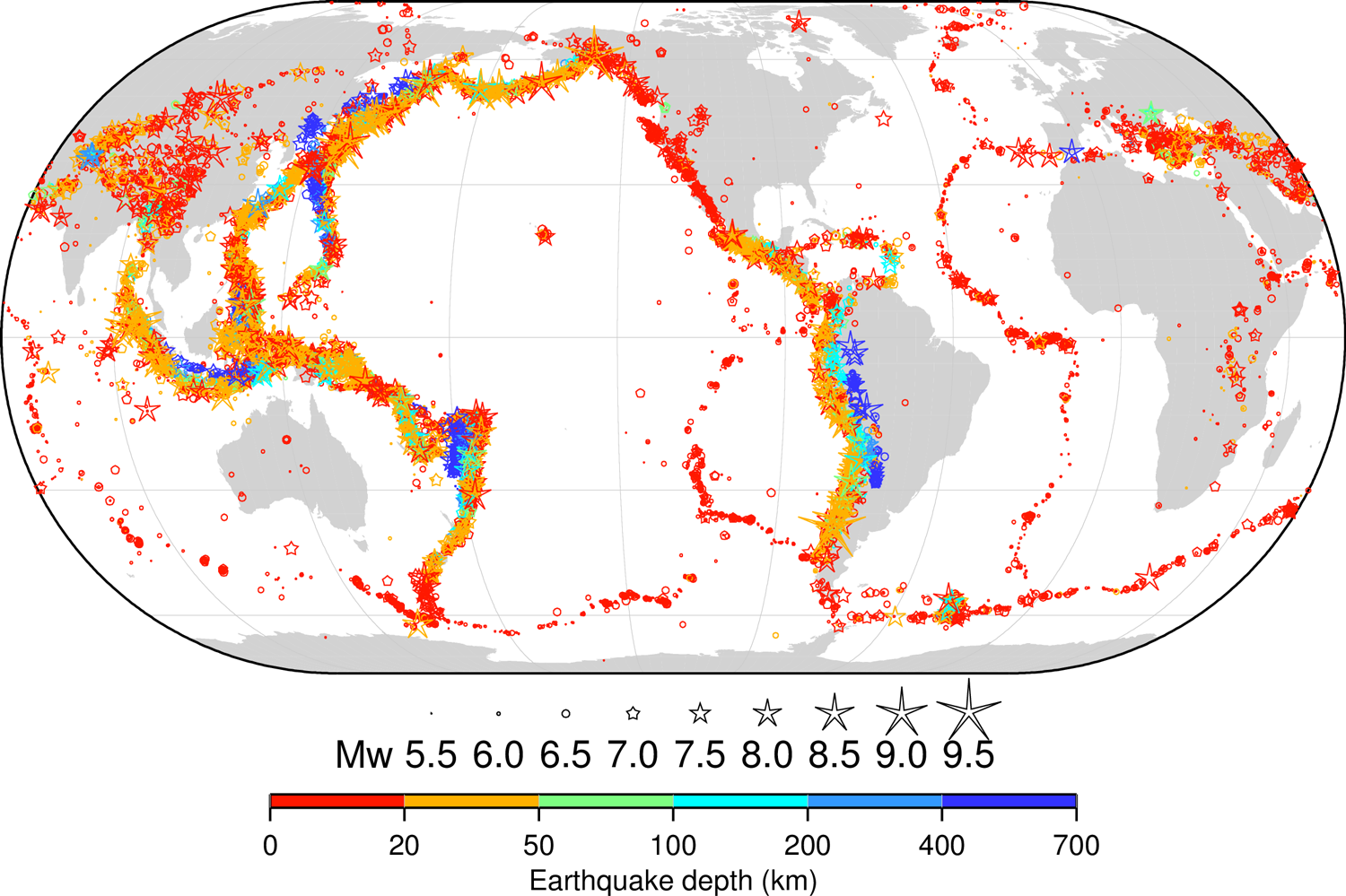
|
| Fig.1: map showing the earthquakes listed in the version 3.0 of the ISC-GEM catalogue (more than 24,000 earthquakes, see Fig.2). The symbols are plotted according to Agnew (2014) and colour coded according to the ISC-GEM depth. |
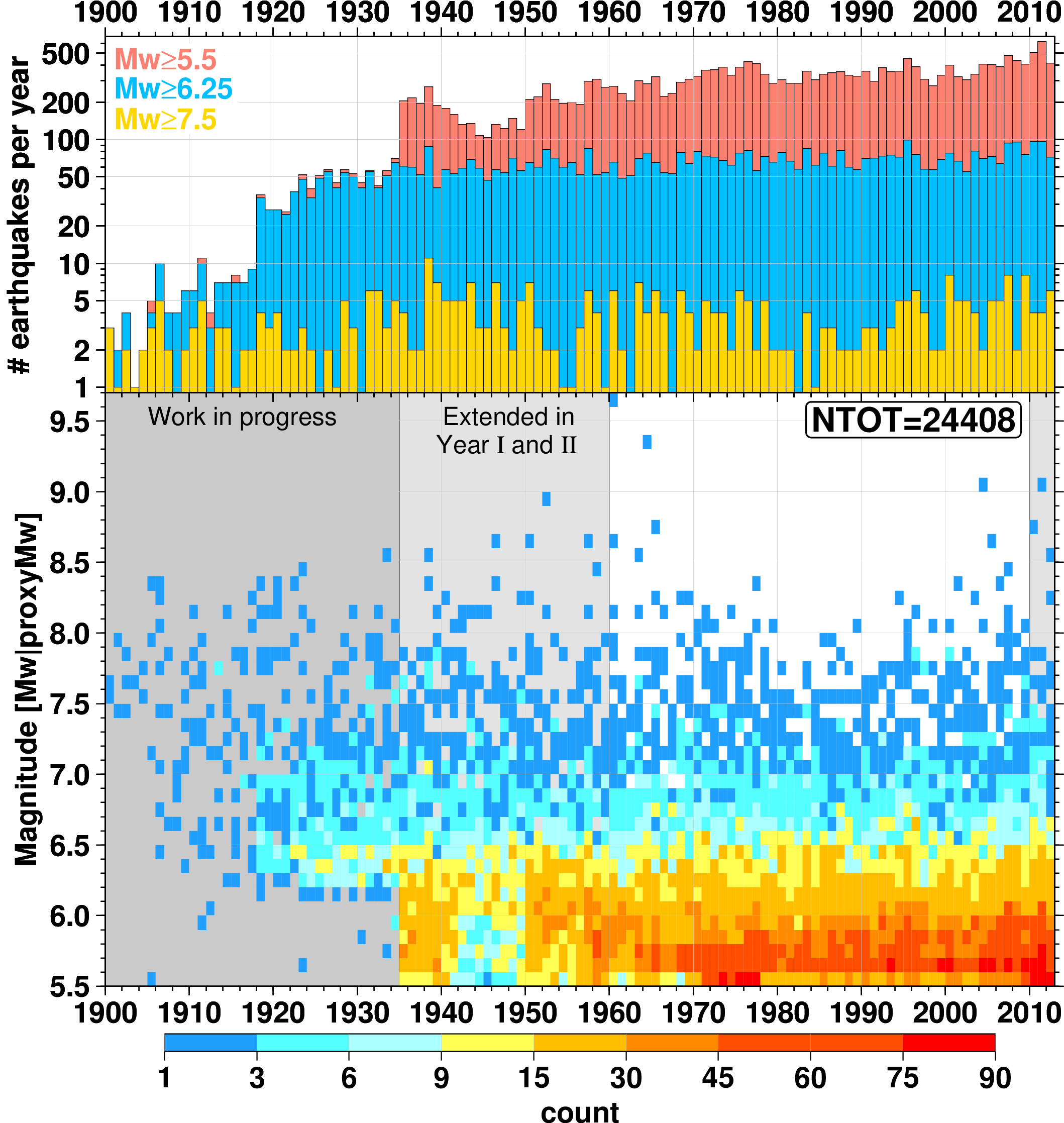
|
| Fig. 2: Top: cumulative annual number of earthquakes with Mw ≥ 5.5 (red), ≥ 6.5 (blue) and ≥ 7.5 (yellow); Bottom: time-magnitude distribution color-coded in cells of 0.1 units of Mw for each year of the ISC-GEM main catalogue. The shaded dark grey area before 1935 is the time period that will be processed in the remaining two years of the Extension Project, the shaded light gray area highlights the years extended in Version 3.0. For comparison with the original version, see Fig. 20 in Di Giacomo et al. (2015b). |
Overview of the ISC-GEM Catalogue version 1.0, 31 Jan 2013
The following cut-off magnitudes were selected prior to the start of the project (Fig. 1) and were dictated by the time constraints and availability of funds:- 1900-1917: Ms≥7.5 worldwide + smaller shallow events in stable continental areas
- 1918-1959: Ms≥6¼
- 1960-2009: Ms≥5.5
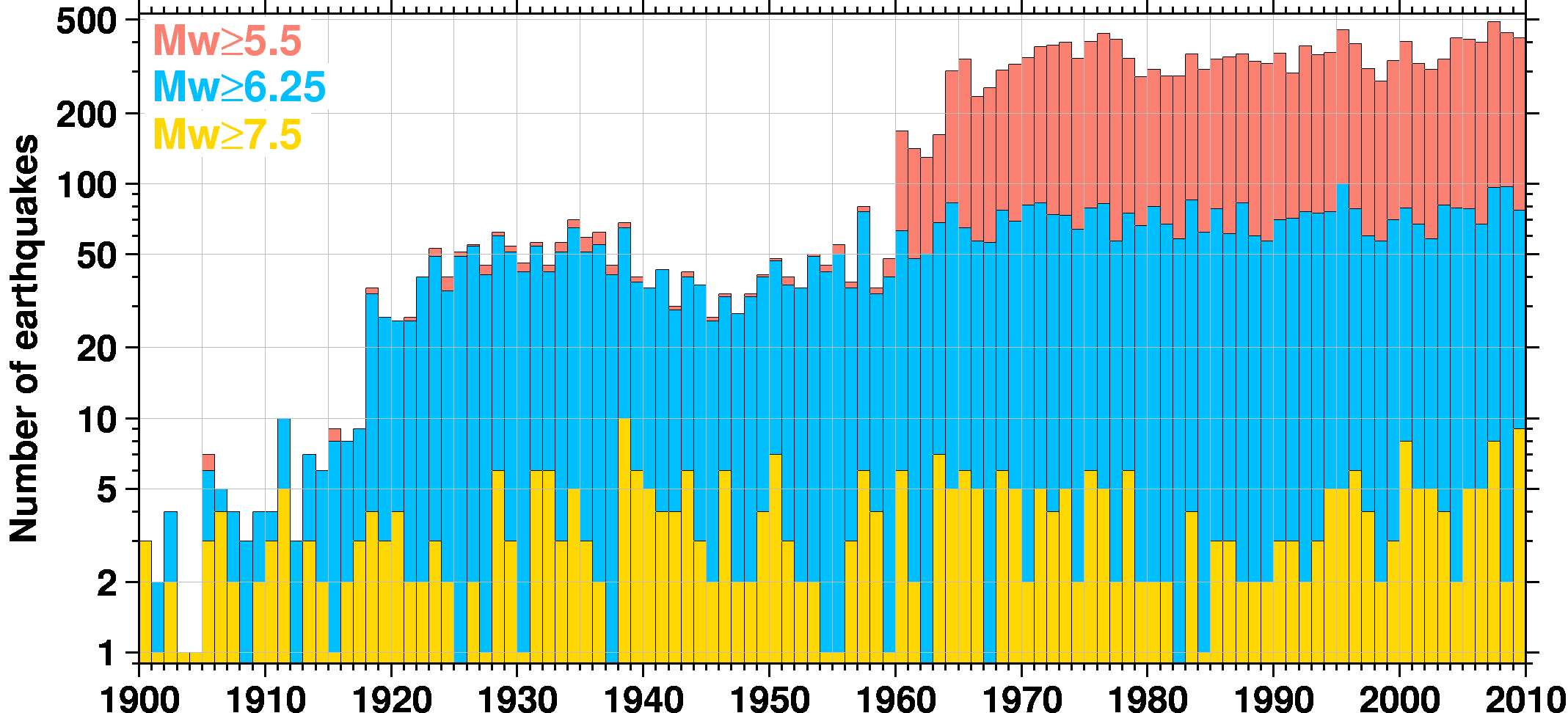
Figure 1. Global earthquake number timeline demonstrating the effect of different cut-off magnitudes over the 110 year period; M indicates a direct or a proxy value of Mw
- 110 years of ~20,000 re-located earthquake hypocentres & uncertainties, using original arrival time data and the same technique and velocity model described below;
- magnitudes expressed in Mw scale with uncertainties, based on seismic moment, where possible; proxy Mw were used in all other cases based on the newly developed empirical relationship with Ms and mb.
Manual Data Entry
A massive effort was made to enter into the ISC database those parametric seismic data that were not electronically available (Table 1) prior to the beginning of this project:- Arrival times, body and surface wave amplitudes and periods from the historical paper-based bulletins of high quality stations;
- Abe’s catalogue (1900-1903);
- Gutenberg Notepads (Abe’s adaptation) (1904-1917);
- BAAS Bulletin (1913-1917);
- ISS Bulletin (1918-1963);
- M0 and Mw from selected reviewed scientific literature.
 Table 1. Electronic availability of seismic parametric data prior to the start of the project.
Table 1. Electronic availability of seismic parametric data prior to the start of the project.
Earthquake Relocation
We relocated every earthquake hypocentre (except a few in 1900-1903) using a two-stage process:Stage 1: Earthquake depths are determined using the EHB technique (Engdahl, van der Hilst & Buland,1998) that features:
- a comprehensive analysis of near-event surface reflections off the earth surface inland and ocean bottom or water surface in the oceans;
- station patch corrections.
- independent depth confirmation using depth phase stacking;
- more accurate epicentre locations due to correlated error structure taken into account (removes bias from uneven geometrical station configuration);
- all phases predicted by the ak135 velocity model are used to constrain hypocentres.
 Figure 4. An example of improvement of previous event
locations in the Fiji-Tonga-Kermadec region (left) as a result of this
project is seen in much tighter clustering of events (right)
illuminating specific tectonic features.
Figure 4. An example of improvement of previous event
locations in the Fiji-Tonga-Kermadec region (left) as a result of this
project is seen in much tighter clustering of events (right)
illuminating specific tectonic features.
Earthquake Magnitudes
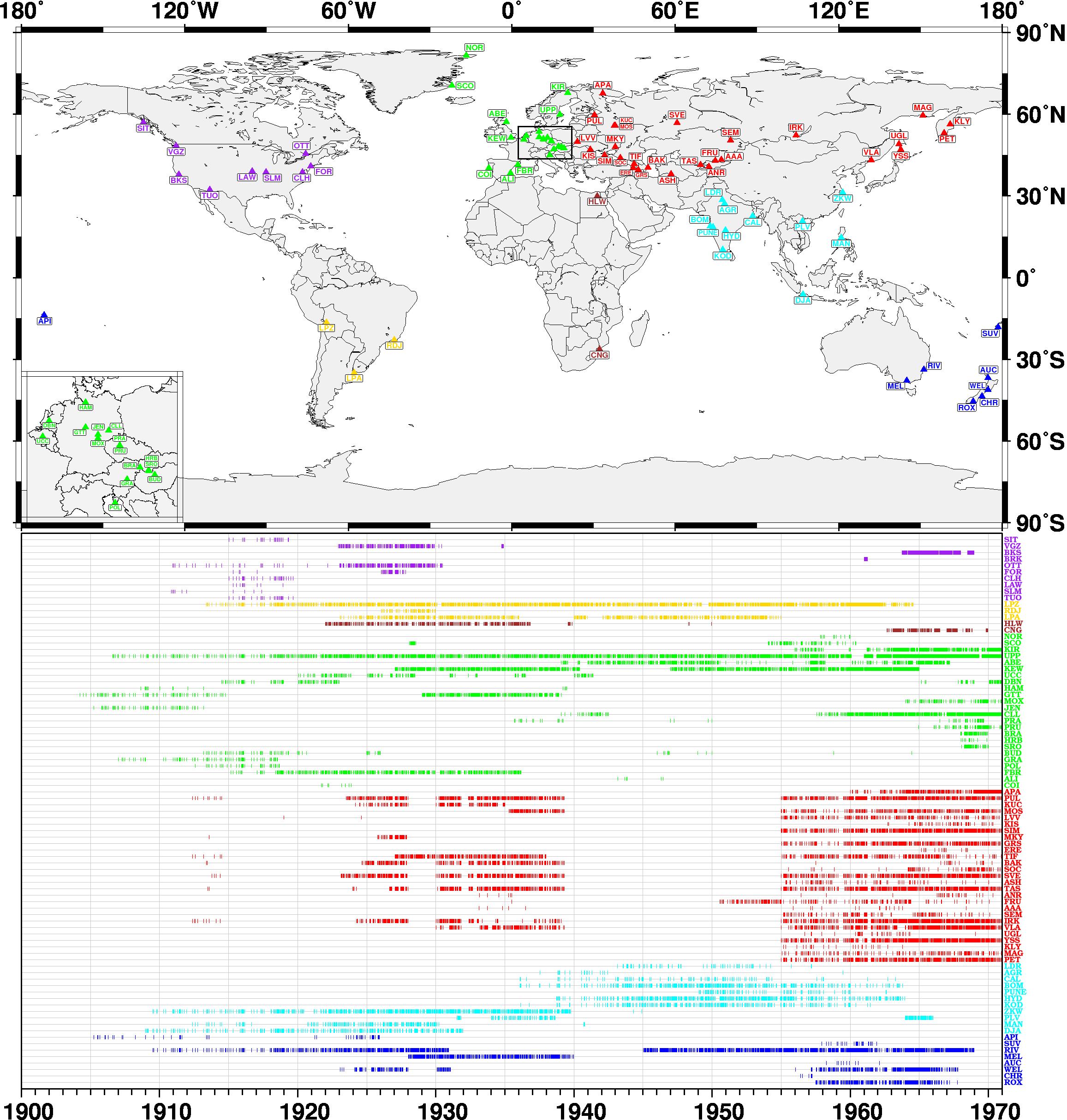
Figure 6. The map and the timeline of seismic stations for which additional data have been manually entered and used for computation of the Ms and mb magnitudes.
Overall global magnitude completeness
The ISC-GEM Global Instrumental Earthquake Catalogue (1900-2012) is the result of a special effort to adapt and substantially extend and improve currently existing bulletin data of large global earthquakes (magnitude 5.5 and above) to serve the requirements of the specific user group who assess and model seismic hazard and risk.
Moreover, the Catalogue has a multidisciplinary use in a wide range of other areas such as studies of global seismicity, inner structure of the Earth, tectonics, nuclear test monitoring research, rapid determination of hazard etc.
This global catalogue was also designed to serve as a reference to be used for calibration purposes by those compiling regional seismicity catalogues that contain events of much smaller magnitudes. This way the catalogues prepared by other teams for different regions may contain comparable earthquake locations and magnitude parameters, especially in border regions.
The Catalogue was initially funded by the GEM Foundation as part of the five Global Hazard Components and is a result of the 27 month long project ended In January 2013 (Storchak et al. 2013). This project was led by the ISC and performed by a Team of International Experts in accordance with the requirements of the Scientific Board of GEM and following recommendations of the team of IASPEI Observers. In November 2013 we started the four year Extension Project to include global earthquakes (above 5.5) that occurred after 2009 and smaller earthquakes (below 6.2-6.3) during the 1904-1959. More details are available in the Catalogue Overview and Extension Project pages.
People
-
Since November 2013:
the project to extend the ISC-GEM Catalogue is led by Dmitry Storchak and Domenico Di Giacomo (ISC, UK), with scientific support from Bob Engdahl (University of Colorado, USA) for the two-tier relocation procedure. Further IT, admin and technical staff at the ISC are working on the project.
-
May 2010-January 2013:
The project was led by Dmitry Storchak with scientific input from Willie Lee. The work on this project was performed by the Team of International Experts:
- Domenico Di Giacomo, István Bondár, James Harris and Dmitry Storchak (ISC, UK),
- Bob Engdahl (University of Colorado, USA),
- Antonio Villaseñor (IES Jaume Almera, Spain),
- Peter Bormann (GFZ, emeritus, Germany),
- Willie Lee (USGS, emeritus, US),
- Graziano Ferrari (INGV/SISMOS, Italy).
- Göran Ekström (GCMT Project, Columbia University, US),
- Roger Musson (BGS, UK),
- Johannes Schweitzer (NORSAR, Norway),
- Nobuo Hamada (JMA, emeritus, Japan).
*** - Catalogue Update Log
28 January, 2016: Version 3.0 released Version 3.0 of the ISC-GEM Catalogue is the result of the 2nd year of the Extension Project that began in November 2014. We included earthquakes smaller than 6.25 during 1935-1949 listed in the ISS but not processed in the past. We also included earthquakes that occurred in 2012. The recent data were available from the ISC Bulletin in an electronic format, but the arrival time data for earthquakes during 1935-1949 had to be digitized from the ISS and amplitude-period data added from original station bulletins in order to re-assess the magnitudes (mostly MS). The procedures used to digitize the parametric data is described in Di Giacomo et al. (2015).
Version 3.0 includes 414 earthquakes that occurred in 2012. For the period 1935-1949, we have relocated 4403 earthquakes and obtained new MS values for 2719 of them (available in the Main Catalogue). The events for which we could not re-compute the magnitude are listed in the Supplementary Catalogue
During the year we also received station bulletins kindly provided by the personal collection of Prof. N. Ambraseys, British Geological Survey (BGS) collection, bulletins from the Geophysical Institute of the Czech Academy of Sciences in Prague, the Geophysical Survey of the Russian Academy of Science in Obninsk and the EOST of the University of Strasbourg (France). Those station bulletins helped to fill some significant gaps in the ISC original collection and allowed to add new surface wave amplitude-period data for earthquakes listed in previous versions of the ISC-GEM Catalogue. With the data newly available, we better constrained the MS for 648 earthquakes between 1935 and 1949 listed in previous versions by using more station magnitudes (e.g., 42% of the original MS was obtained from NSTA ≤ 5, for the updated MS this percentage drops to ~5%). Finally, we revised the hypocentre locations of 92 earthquakes outside the period 1935-1949. Most of the revisions concerns depth amendments from the first step (EHB location) of the two-tier location approach before the epicentre is relocated with the ISC locator (see Bondár et al., 2015). These 92 earthquakes have occurred between 1905 and 2004 but mostly before 1979; 34 of them were listed in the Supplementary Catalogue.
10 July, 2015: Version 2.01 released Removed evid = 877612 from the main catalogue as the event is a documented nuclear explosion in Novaya Zemlya.
19 January, 2015: Version 2.0 released Version 2.0 of the ISC-GEM Catalogue is the result of the 1st year of the Extension project that began in November 2013. We included earthquakes smaller than 6.25 from the 1950s, listed in the ISS but not processed by us in the past. We also included earthquakes that occurred in 2010 and 2011. The recent data were available from the ISC Bulletin in an electronic format, but the arrival time data for earthquakes in the 1950’s had to be digitized from the ISS and amplitude-period data added in order to re-assess the magnitudes (mostly MS), using procedures described in Di Giacomo et al. (2015).
Version 2.00, therefore, now includes data for 504 earthquakes from 2010 and 672 from 2011. For the 1950s, we processed and relocated 4156 earthquakes and obtained 2216 new MS and 12 mb values. We also introduced a new magnitude quality flag “D” for the Mw proxies with uncertainty larger than 0.7, which is now listed in the Supplementary Catalogue. In addition, since many ISS earthquakes during the 1950s when processed resulted in MS smaller than 5 (i.e, much smaller than our catalogue cut-off magnitude of 5.5), we have listed them in the Supplementary Catalogue rather than excluding them completely from the Catalogue, with particular regard to the importance of re-assessing the magnitude of earthquakes before the beginning of the digital era.
During the year we also received station bulletins kindly provided by colleagues from Edinburgh, Eskdalemuir, Obninsk, Prague and Apatity. Those station bulletins helped us to fill some significant gaps in the ISCs original collection and allowed us to add new amplitude-period data for earthquakes listed in previous versions of the ISC-GEM Catalogue. With the data newly available, we obtained fresh magnitudes for about 200 earthquakes that were previously listed in the Supplementary Catalogue (Version 1.05) and added 237 new earthquakes between 1960 and 1963. Finally, we revised the hypocentre locations of 458 earthquakes in the catalogue, predominantly in remote areas, with 75% of depth changes within 20km and the rest within 60km.
14 February, 2014: Version 1.05 released Updates to the catalogue regard 1) updated location and magnitude of the earthquake in Sumatra that occurred the 6 June 1943 (evid = 899872), which moved from the Supplementary Catalogue to the Main Catalogue; 2) updated the proxy MW for six earthquakes; 3a) addition of an earthquake (evid = 603952288) in the Main Catalogue that occurred in Turkey the 4 December 1905 and 3b) updated location of one of its aftershocks (evid = 16957879) that occurred approximately five hours later.
Details follow:
1) The location of the 6 June 1943 Sumatra earthquake has been updated and the epicentre moved to the North 40 km but most importantly the depth changed from 90 to a fixed depth of 10 km. Although the reported depth phase arrival times suggest that the hypocentre is around 90 km, we accept the 10 km depth since surface ruptures were reported (see, e.g., Untung et al., BSSA 1985). Hence, the event now moved from the Supplementary Catalogue to the Main Catalogue as with the shallow depth solution MS is available. From 12 stations we obtain MS= 7.8 +/- 0.1, which lead to a MW proxy of 7.81 +/- 0.25. We thank James Dewey (USGS Emeritus) for drawing our attention to this event.
2) the proxy MW for six earthquakes (evid 679878, 1656088, 1656090, 1728632, 13389548, 11911358) has been updated. With the exception of evid = 679878, the proxy MW is now based on mb instead of MS. The MS for those earthquakes was based on few stations with suspiciously large amplitudes. For evid = 679878 we obtained a new MS after correcting the surface wave amplitude units at six stations from micrometers to nanometers. The new six MW proxies are significantly smaller than the previous ones.
3a) the mainshock of the East Anatolian Fault sequence that occurred the 4 December 1905 has been added (evid = 603952288) after collecting arrival times from the ISA bulletin (61 arrivals) and surface wave amplitudes from four stations (GTT, LEI, POT, JEN). The event was missing due to a mis-association in the Centennial Catalogue between magnitude and origin time of the mainshock with one of its aftershocks;
3b) the location of the aftershock at 12h (evid = 16957879), which was already available in previous releases, has been updated. The previous ISC-GEM location was close to Aleppo, Syria, whereas the current location is much closer to the East Anatolian Fault.
5 November, 2013: Version 1.04 released We noticed that the Appendix is not recognised by our users as an important part of the ISC-GEM Catalogue. We therefore renamed the Appendix to be called Supplementary Catalogue.
The terms of the license have also changed to reflect the availability of the ISC-GEM Catalogue to all parties.
Updates to the catalogue regard 1) the proxy Mw for the 12 April, 1967 earthquake in the Leeward Islands region (evid = 836598) and 2) the GCMT solution for the complex event occurred near Potenza (South Italy) the 1990-05-05 (evid = 368231). With regard to the Leeward Islands 1967 event the original proxy Mw = 7.4 was based on the MS from three mis-associated station amplitude readings. The updated proxy Mw 5.0 is based on mb. We thank Uri Ten Brink from USGS office in Woods Hole, MA, for pointing out the excessive magnitude value. With regard to the complex Potenza earthquake of 1990-05-05, the GCMT solution has been moved to evid = 368231 from evid = 368230. These two events are separated by approximately 10 seconds and are interpreted as foreshock (evid = 368230) and mainshock (evid = 368231). For more details see, e.g., Ekström (1994). Since the magnitude estimates for the foreshock are uncertain, evid = 368230 is now listed in the Supplementary Catalogue. We thank Paolo Harabaglia (University of Basilicata, Potenza, Italy) for drawing our attention to these events and Göran Ekström (Lamont-Doherty Earth Observatory of Columbia University, USA) for discussing the association of the GCMT solution.
11 June, 2013: Version 1.03 released Updated the location for the earthquake occurred near coast of Venezuela the 1929-01-17 (evid = 907860) and the Mw for the 1967-07-30 Caracas earthquake (evid = 833882). The new location for the 1929-01-17 earthquake is about 98 km north the previous one and fits better with the tsunami observation for this event. The Mw = 7.0 for the 1967-07-30 Caracas earthquake initially adopted from Rial (JGR, 1978) has been replaced with a more recent determination of M w = 6.6 by Suárez and Nábělek (JGR, 1990). We thank Michael Schmitz and Herbert Rendon from the Applied Geophysics Department, Fundación Venezolana de Investigaciones Sismológicas (FUNVISIS), for inquiring about the location and magnitude of these earthquakes.
1 May, 2013: Version 1.02 released Updated are the Mw proxy values for 84 earthquakes between 1988 and 2009. The Mw proxies were based on excessively large MS based on the surface wave amplitudes reported by just a few stations or a single agency. The updated Mw proxies are now based on mb. In particular, we thank Helene Lyon-Caen and colleagues from the Laboratoire de Géologie, Ecole Normale Supérieure in Paris, for pointing out the large Mw proxies for two earthquakes in Greece.
26 Feb, 2013: Version 1.01 released Updated the Mw and Mw proxy values of eight large earthquakes (evids 906508, 897799, 895348, 863756, 830410, 825732, 795586, 736783) following an additional review of corresponding scientific articles and correcting typographic errors in the results of the original bibliographical search for reliable seismic moments. In particular, we thank
Dr. Alexey Ivashchenko from the Tsunami Lab of the Institute of Oceanology, Russian Academy of Sciences, Moscow for pointing out an erroneous Mw for the Mondy earthquake (Baikal rift zone) of April 4, 1950 (evid = 895348).
31 Jan, 2013: Version 1 released This was the first public release of the Catalogue following the completion of the 27 months project.

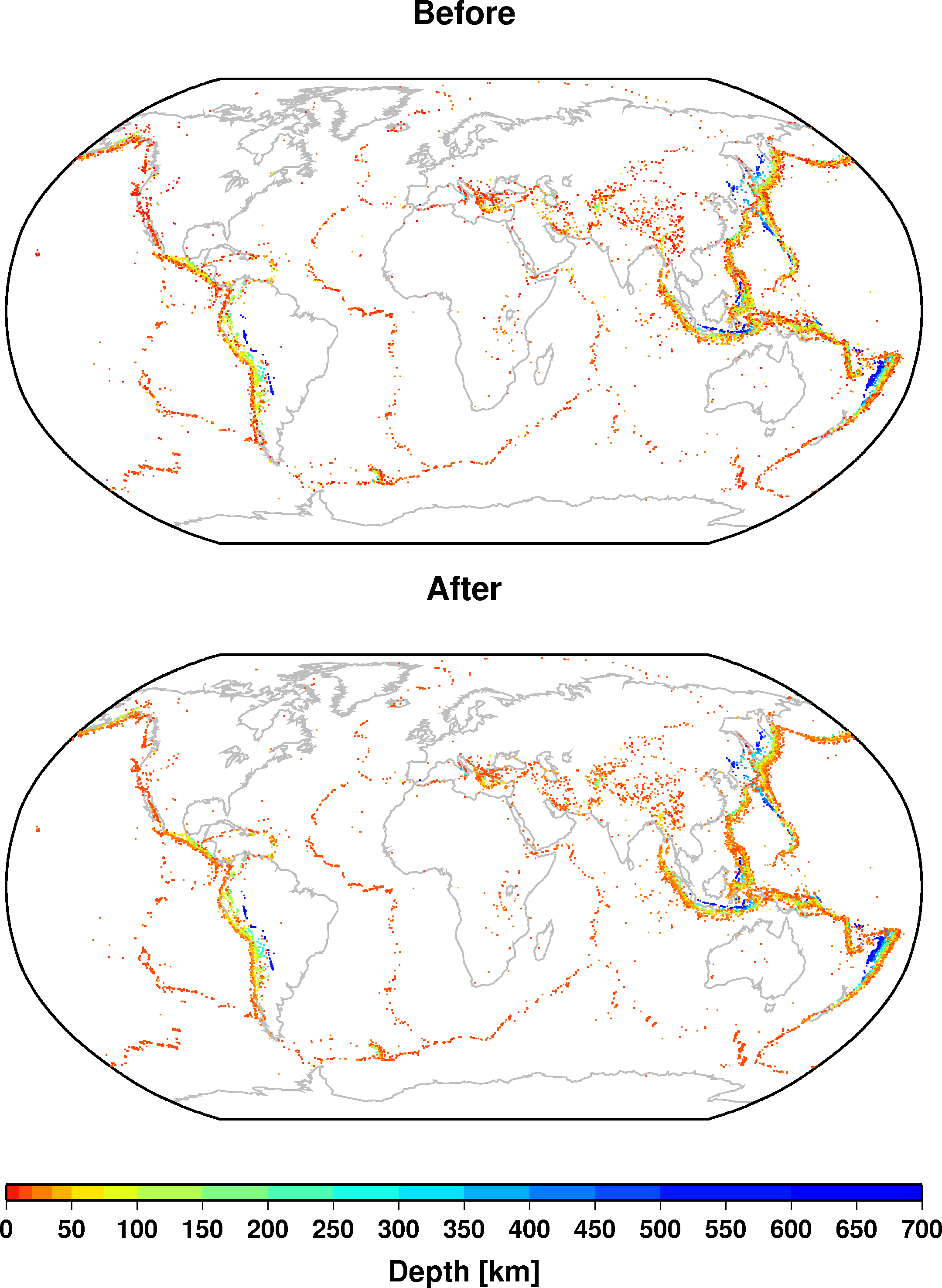
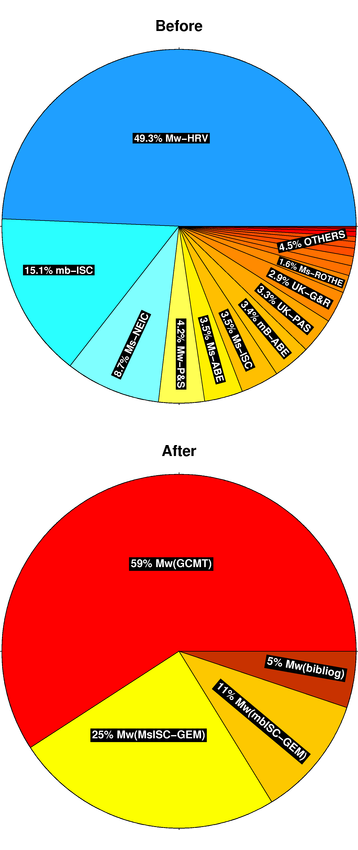
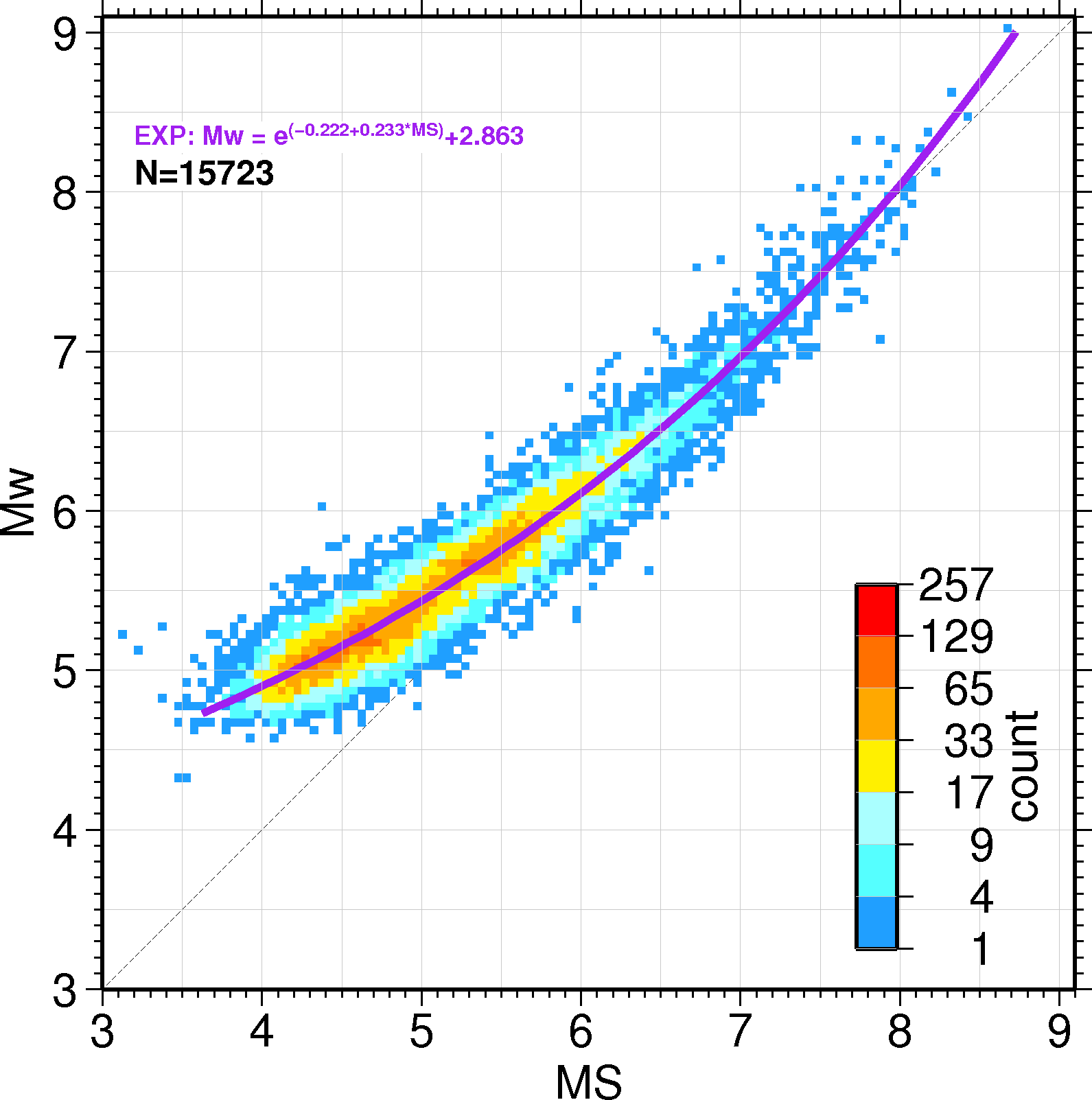
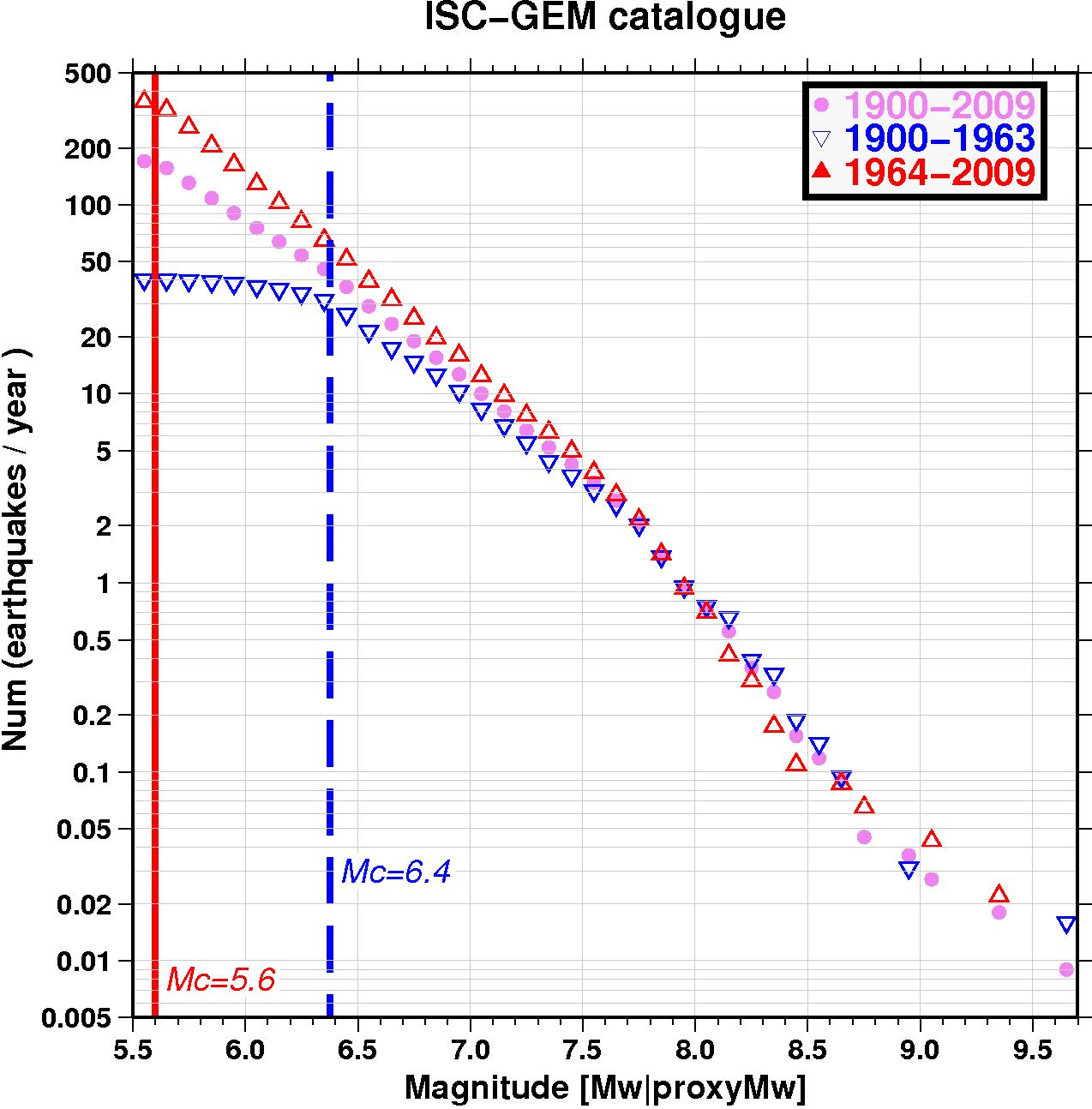









Keine Kommentare:
Kommentar veröffentlichen